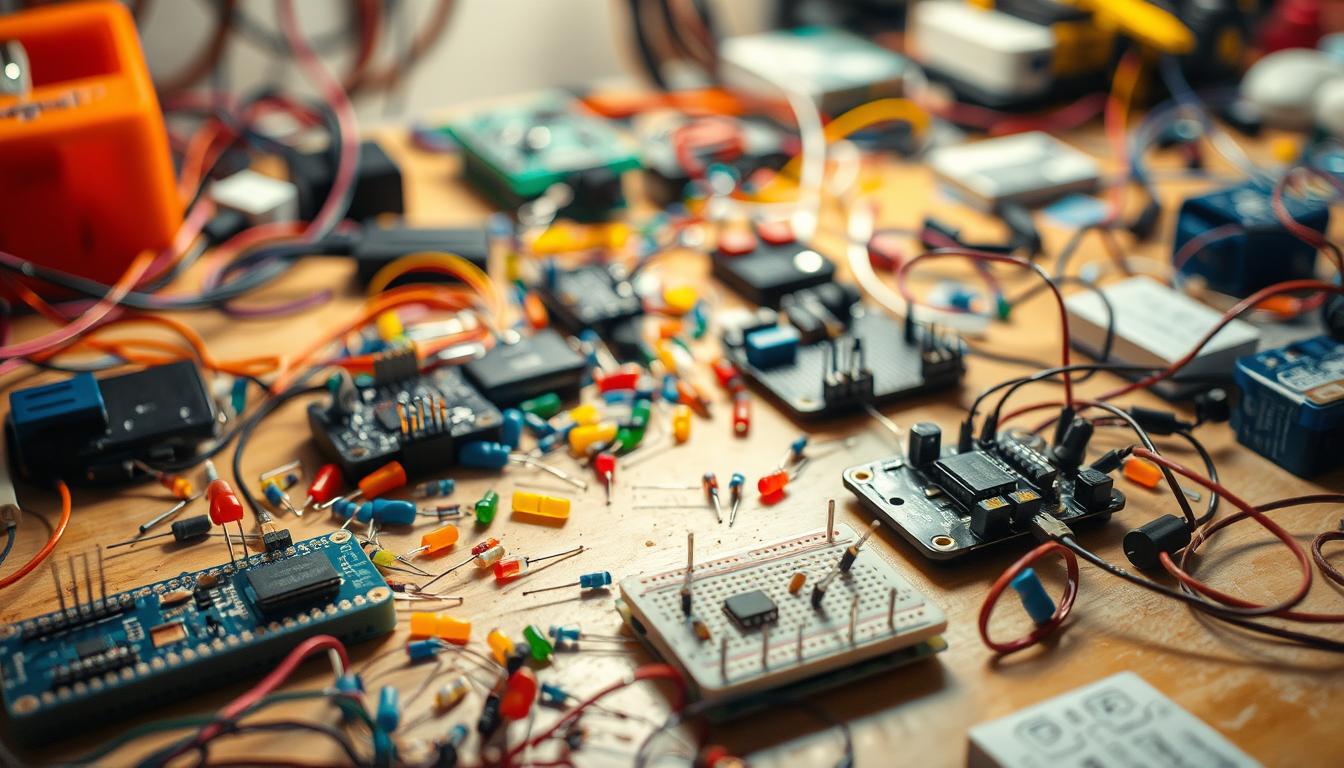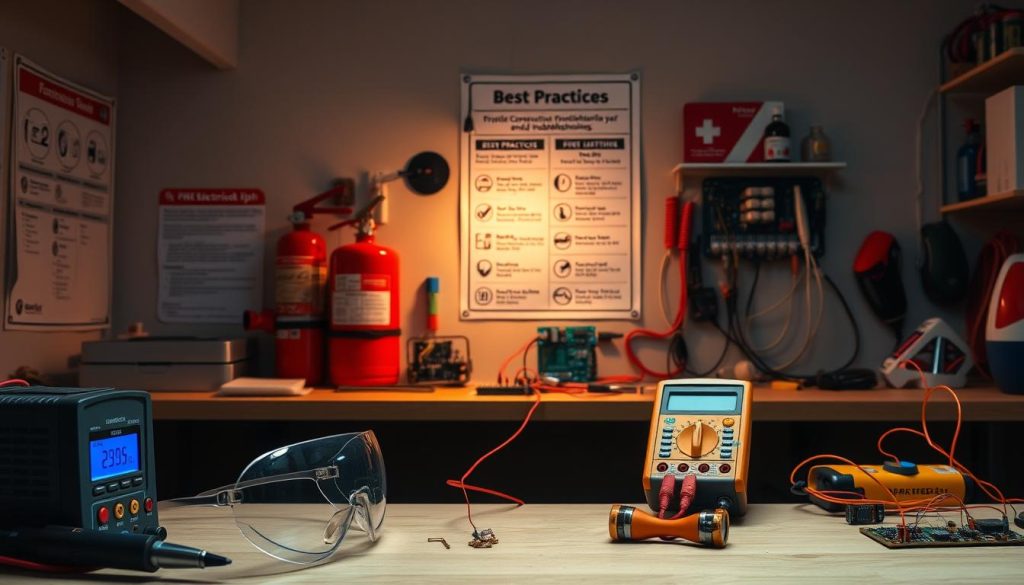Are you curious about how electronic devices work and want to explore the world of DIY electronics? Have you ever wondered what it would be like to create your own DIY electronics projects from scratch?
Engaging in beginner electronics projects can be a fun and rewarding experience, allowing you to learn basic electronics concepts and develop problem-solving skills. By trying out simple circuit projects, you can gain hands-on experience and build confidence in your ability to create and innovate.
Whether you’re a student, hobbyist, or just someone interested in technology, exploring DIY electronics can be a great way to learn and have fun. So, are you ready to start creating your own simple circuit projects at home?
Key Takeaways
Table of Contents
- Learn basic electronics concepts through hands-on experience.
- Develop problem-solving skills with DIY electronics projects.
- Build confidence in creating and innovating with simple circuits.
- Explore various beginner electronics projects to find what interests you.
- Start with simple circuit projects to gain experience and knowledge.
Getting Started with Electronics: What You Need to Know
Embarking on a journey into electronics can be both exciting and intimidating, but understanding the basics can make all the difference. As a beginner, it’s essential to grasp fundamental concepts and gather the right tools for your projects.
Basic Circuit Concepts for Beginners
Understanding basic circuit concepts is crucial for circuit building for beginners. A circuit is essentially a path through which electric current flows. It consists of a power source, conductors (like wires), and a load (such as a light bulb). The flow of electricity is controlled by switches. Familiarizing yourself with these components and how they interact is the first step in creating your own easy electrical projects at home.
Essential Tools and Components for Your Workbench
To start working on home circuit design projects, you’ll need a basic set of tools and components. Essential tools include a breadboard for prototyping, jumper wires, a multimeter for measuring voltage and current, and a power source (like batteries or a DC power supply). Components such as resistors, capacitors, LEDs, and integrated circuits (ICs) are fundamental to creating various circuits. Investing in these basics will help you bring your electronic ideas to life.
As you progress, you’ll discover the joy of creating functional projects that can be both educational and fun. Starting with simple circuits and gradually moving to more complex designs will help you build a solid foundation in electronics.
Safety Precautions for DIY Electronics Projects
DIY electronics projects can be fun, but they require careful safety measures. Working with electronics involves handling components that can be hazardous if not managed properly.
Understanding Electrical Safety
Electrical safety is fundamental when working on DIY electronics projects. It’s essential to understand the basics of electrical current, voltage, and resistance to avoid shocks or short circuits. Always unplug your project before making any adjustments or repairs. Familiarize yourself with the symbols and markings on components to ensure you’re using them correctly.
Setting Up a Safe Workspace
A well-organized workspace is crucial for safe and efficient work. Keep your work area clean and free of clutter to prevent accidents. Use anti-static wrist straps or mats to protect sensitive components from static electricity. Ensure good lighting in your workspace to see what you’re doing clearly, reducing the risk of mistakes.
Simple Circuit Projects at Home for Beginners
Starting your electronics journey can be both exciting and intimidating. Fortunately, there are many easy electrical projects for beginners that can help you build confidence and skills.
One simple electronic circuit project is a basic LED circuit. To create this, you’ll need an LED, a resistor, a battery, and some jumper wires. Connect the positive leg of the LED to the positive terminal of the battery through the resistor, and the negative leg to the negative terminal. This homemade circuit project is a great way to understand how to control the flow of electricity.
For students, simple electronic circuits like this can be both fun and educational. By following step-by-step guides and experimenting with different components, you can gain a deeper understanding of circuit design and functionality.
As you become more comfortable with basic circuits, you can move on to more complex homemade circuit projects. Try experimenting with different components, like capacitors and transistors, to create more sophisticated circuits. With practice and patience, you’ll be well on your way to creating innovative electronic projects.

